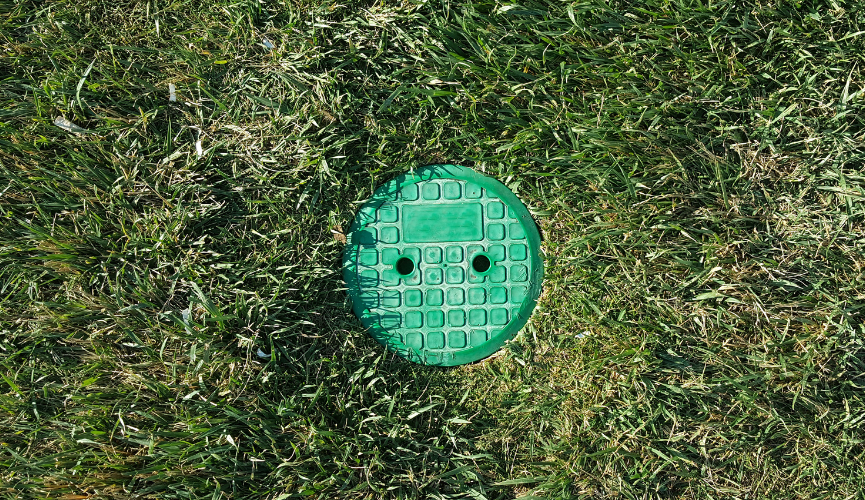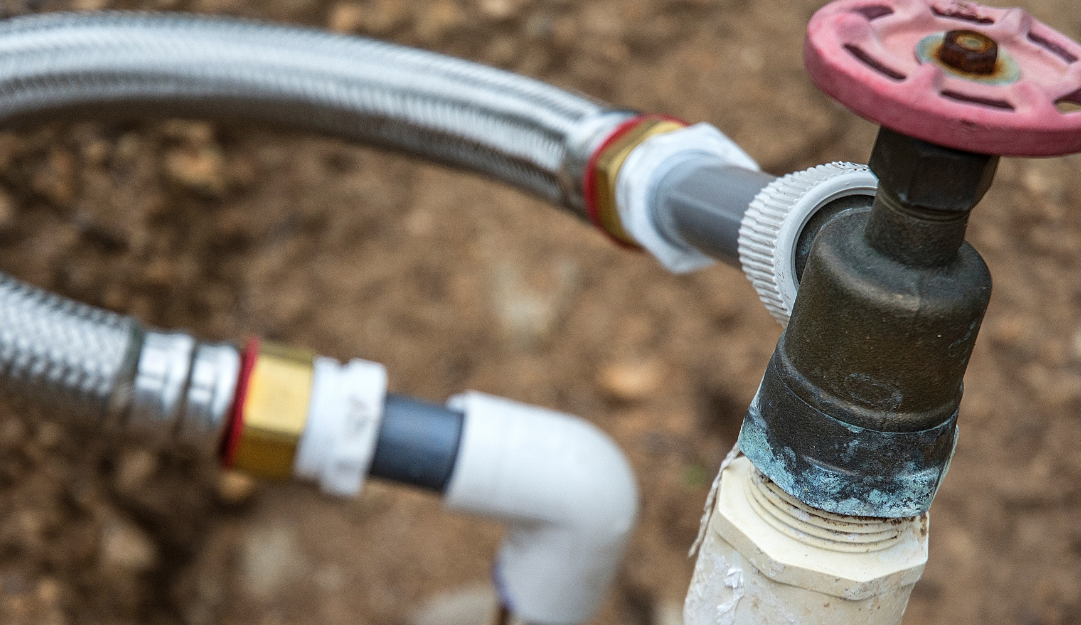How To Find Sprinkler Valves

Ever wondered about the magic behind the lush greenery of your yard? The secret lies in the efficient sprinkler system buried beneath your feet.
But what happens when don't know how to find sprinkler valves in the irrigation system? That can be a problem.
Key Takeaways
- Get a sprinkler system blueprint from the sprinkler company who installed it
- Use a wire tracer or valve locator to easily find irrigation valves
- If all else fails, call the sprinkler company and get a pro to do it
Knowing how to find the sprinkler valves in your irrigation system is critical for repair and maintenance. If you have no idea where to start, keep reading and we'll walk you through it.

How To Find Buried Sprinkler Valves
Sprinkler System Layout
Knowing your sprinkler system's layout is crucial for finding irrigation valves. With a blueprint, you should be able to walk right up to where a valve box is to repair the valves.
However, most people have no idea how their sprinkler system is laid out. Keep reading below if you are that person.
What Is A Sprinkler Valve?
Valves for irrigation systems, also known as sprinkler valves or an irrigation valve, serve as the controllers of a lawn’s watering system and contain backflow preventers to protect water sources.
Functioning similar to traffic signals, these gates are responsible for regulating how much H2O reaches each zone within the yard at any given time – through varieties such as angle and electric solenoid valves that fit certain set-up specs.
Automatic irrigational equipment provides electrical transmission from your main irrigation controller which opens/closes pipes depending on their necessity. It's an extremely efficient and productive sprinkler method.
It's important to know how irrigation controllers work before you start tinkering with the valve box.
Identifying Valve Boxes
Valve boxes are an essential part of your sprinkler system. They provide protection for the valves from external conditions such as dirt, bad weather and rodents.
The boxes also make sure that everything looks neat by hiding ugly sprinkler valves out of sight. They are identified with tags containing information on number, type and other info about the system itself.
For larger yards, a perfect place to have one or more valve boxes installed would be at the start of each irrigation zone so they can easily be accessed when needed.
Above Ground Components
Above the ground, you can see sprinkler heads, pipes and valves which together form part of your sprinkler system. These components will be located close to where water is sourced from, around buildings such as a house or garage perimeter or sometimes hidden away amongst foliage.

Step-by-Step Guide to Finding Buried Sprinkler Valves
Probe the Soil Technique
The cost-effective ‘probe the soil’ method for locating buried sprinkler valves is an easy one to use. To perform it, take a thin rod and insert it into the dirt at suspected irrigation valve locations.
Look for valve boxes. If valve boxes were set over the valves, then they should be just below the boxes. Push down until there is resistance or until you reach the desired depth. If you hit a metal box, or anything that doesn't feel like soil, you may have found your irrigation valves.
But be careful - it's easy to confuse irrigation valves with rocks and before you know it you could be digging up your lawn. On top of that, haphazardly probing into your irrigation valves, could damage the valve wires, solenoid, or the irrigation pipes. Might be better to use some of the other methods listed below.
Using a Metal Detector
When hunting for sprinkler valves, a metal detector can be an ideal tool. It produces an electromagnetic field that causes magnetic fields to form around the metallic parts of these devices.
But not all types of valves are constructed with metal components, so it is essential to select and use the proper detecting machine or valve-locating apparatus.
To maximize your success when using this kind of equipment, you should tweak its sensitivity settings until they reach optimal levels in order to detect even small traces of metals associated with the pipes below surface level, practice will help perfect this skill!
Working with a Valve Locator
For a more advanced solution, look into obtaining a valve locator. This is an ideal tool for discovering the position of sprinkler valves buried under soil and tracing their related wires connected to the controller.
You can rent a valve locator. No need to buy. These devices contain a few things that help locate lost valves:
- Transmitter
- Receiver
- Wire leads
- Grounding stake
They detect lost valves by tracking wires for the controller to the valve site. The valve locator will transmit a beeping signal along the length of the wire to find irrigation valves. This is the best way to find valves without ruining your lawn.
Using a Wire Tracer
Use a wire locator to trace the wire path to to the valve solenoid. Wire tracers can also be rented from a local hardware store. They follow the path of the wires starting from the irrigation system controller.

Preparing For Future Maintenance
There are two ways to prepare for future maintenance that will save you hours of pain or costly rental fees:
- Creating an irrigation blueprint
- Tagging your valves
Creating an Irrigation Blueprint
An irrigation blueprint functions as a map for your sprinkler system. It is an effective tool to recognize the parts of the system, perform checkups and repairs, and make necessary adjustments with ease.
The process of creating such plan includes measuring and charting out your lawn area, deciding where water will come from, placing sprinkler heads in their designated spots while calculating how much water it requires (to preserve resources), designing its piping structure incorporating valves.
This might sound complicated and you might be thinking, 'how the heck am I going to do this?' Well you shouldn't. Whoever installed your irrigation system should have blueprints. And if you are having someone install your system - then ask for a blueprint!
Labeling for Quick Identification
Having labels on your sprinkler system is essential to proper maintenance. To make identification and arrangement of components easier, marking flags or stakes should be placed at each sprinker head for easy detection.
Most people don't actually want to have identifiers throughout their lawn on every sprinkler head. So just stick to the sprinkler valve box. That should save you enough time if you ever have issues.
Final Say On Burying Drip Irrigation Line
That's all there is to know on how to find your sprinkler irrigation valves. The next question would be - what do you do when you find them?
Irrigation valves are just one part of any good drip irrigation system. There is so much more to learn and to know when it comes to watering your lawn or your garden.
How To Find Sprinkler Valves FAQs

Carl Anderson
Carl Anderson is an avid outdoorsman with a keen interest in writing about and reviewing tools. He has over 20 years of writing experience and the only time he isn't feverishly typing away at his computer is when he's outside in nature working on his projects. You can learn more about him here.
Join our community!
Join to receive guides, insights, and the latest gardening deals!
